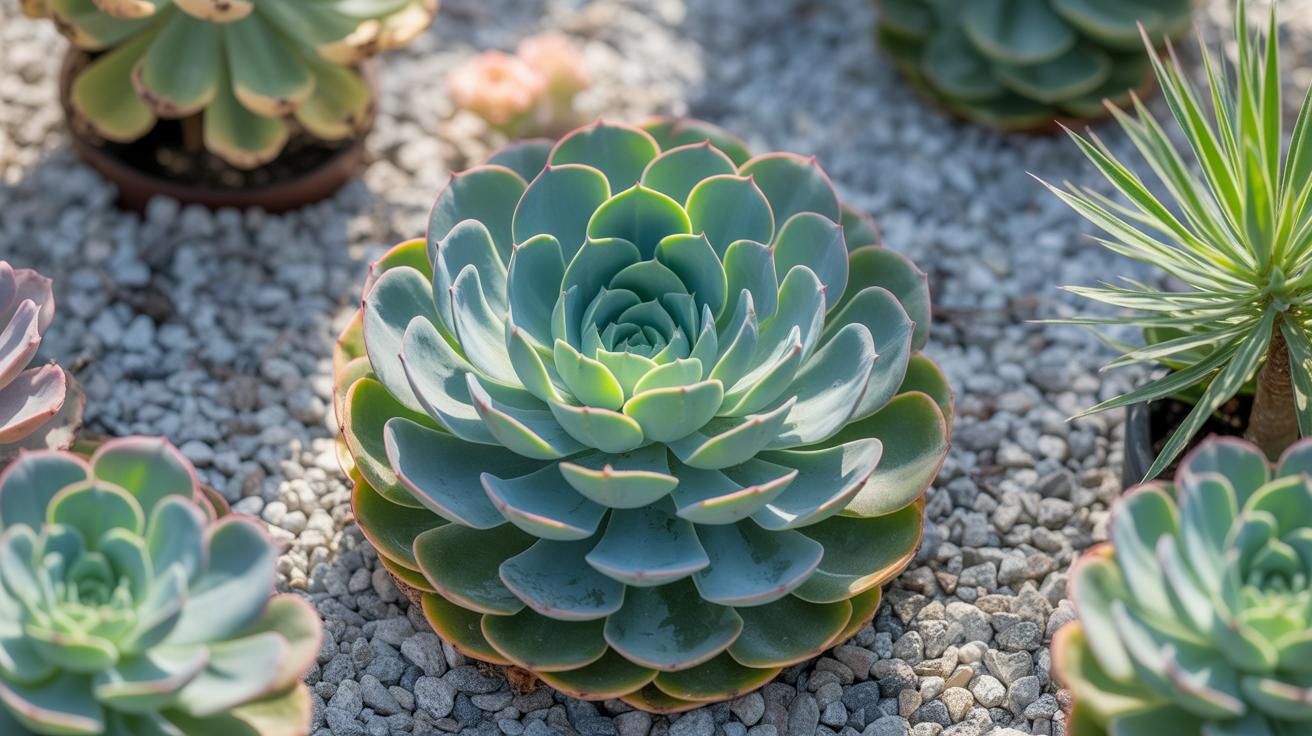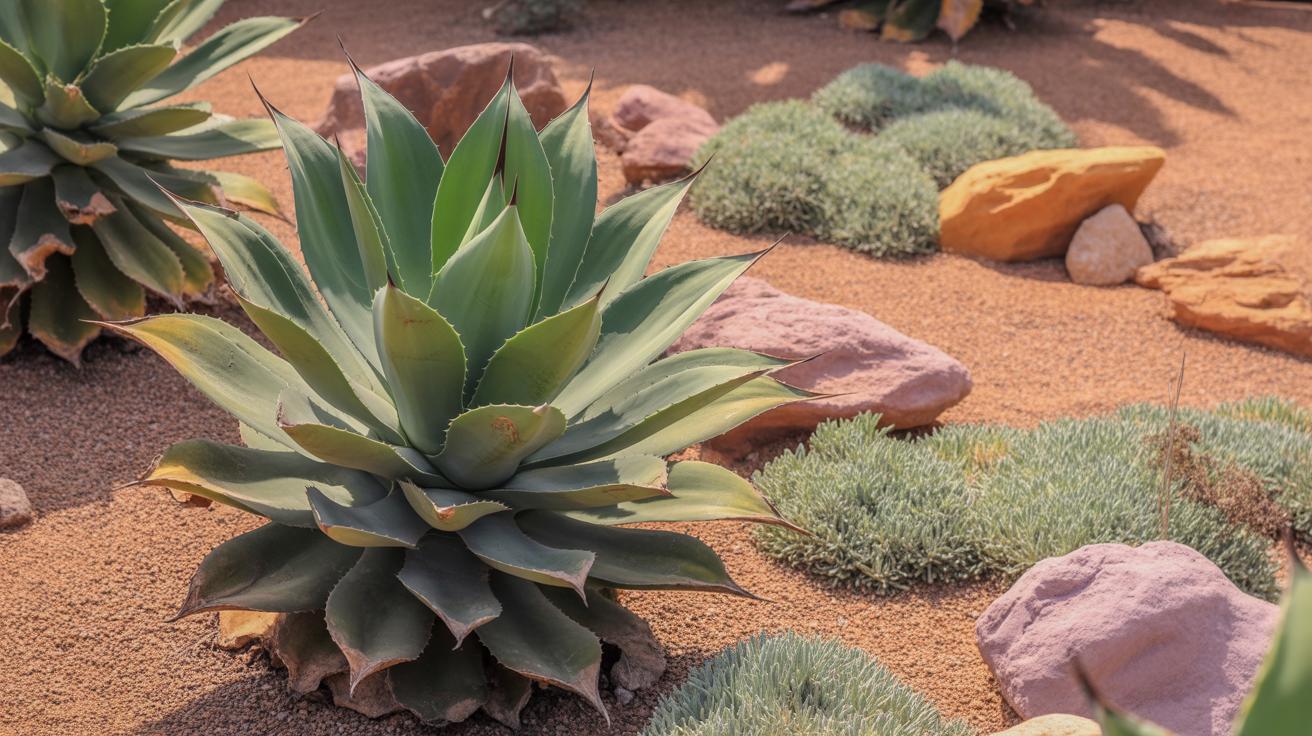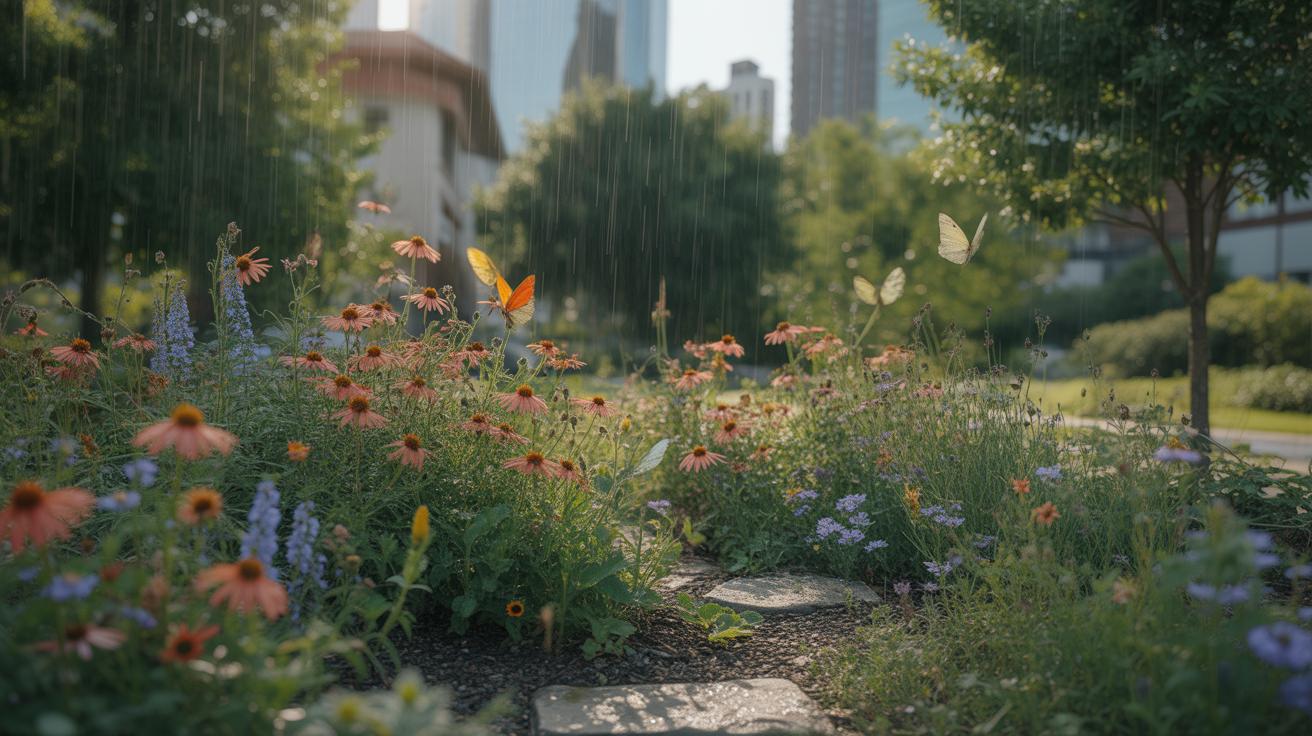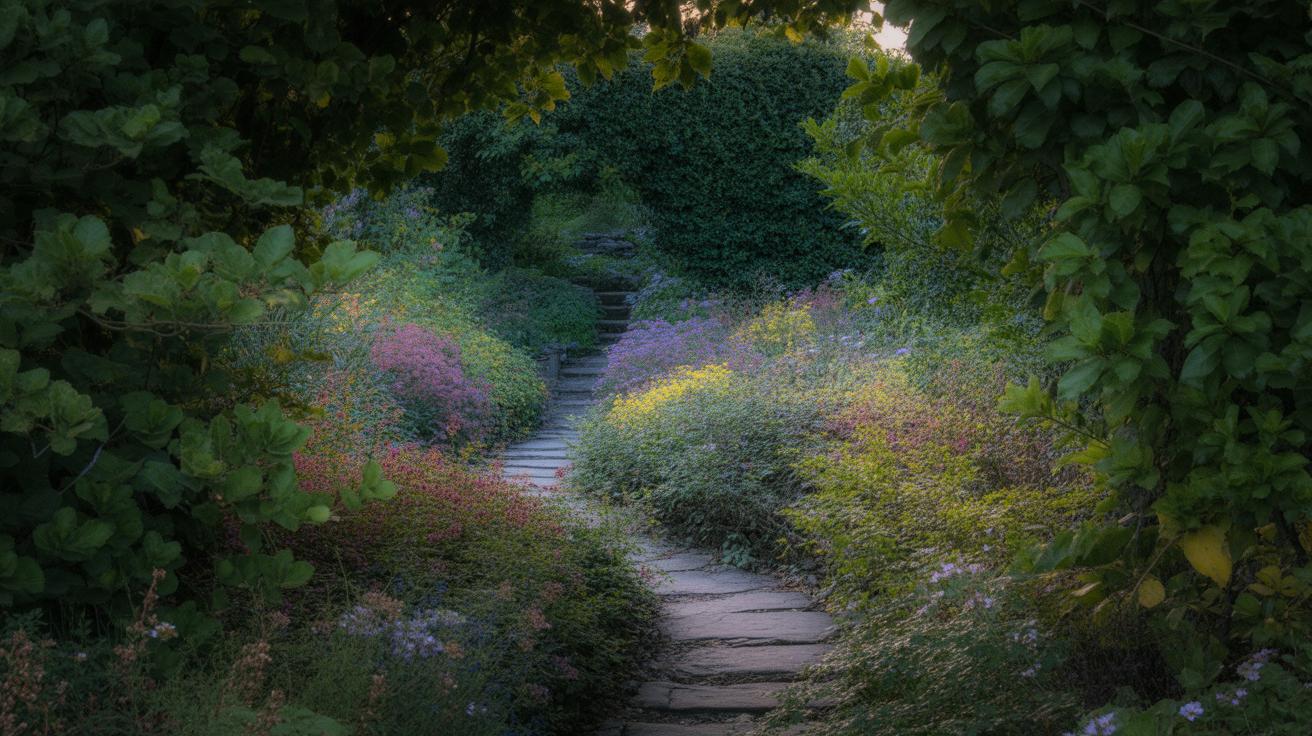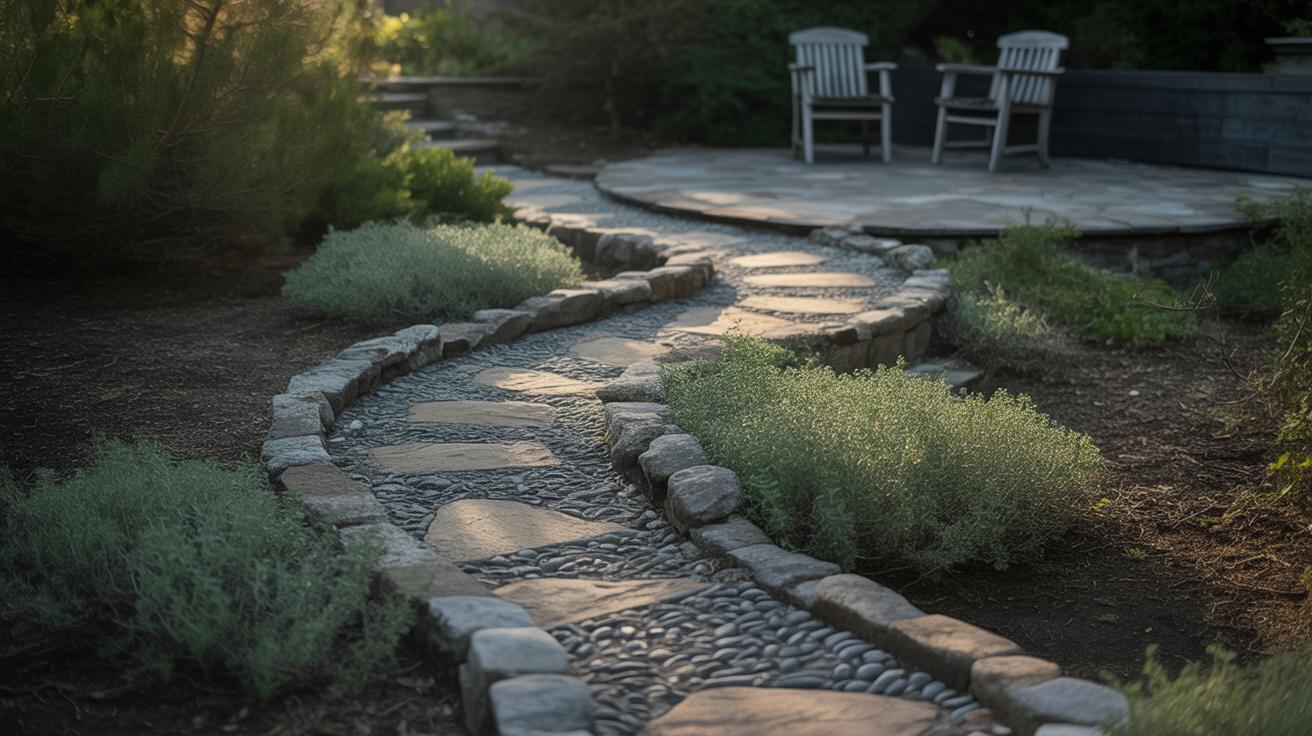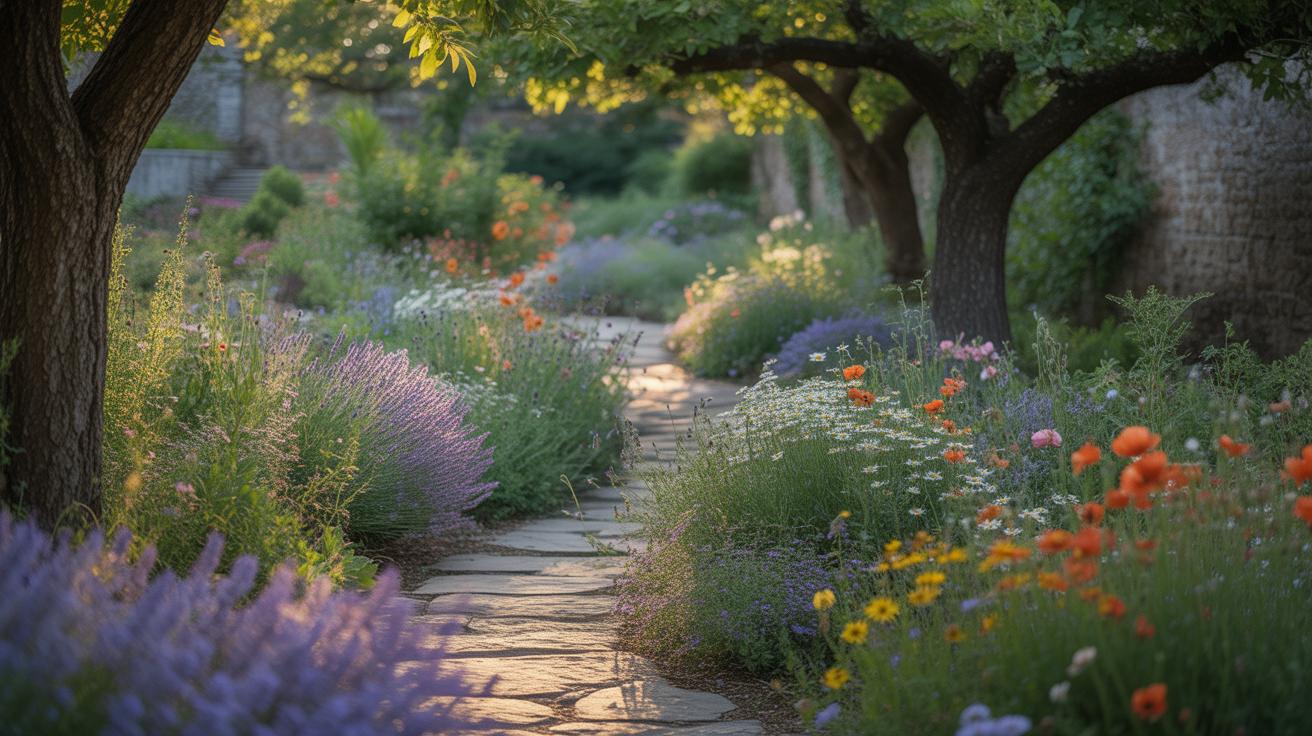Introduction
Xeriscape landscaping is a way to design your garden that focuses on saving water. This method uses plants that do not need much water, helping you reduce the amount of water used in your home garden. By choosing the right plants and design, you can have a beautiful garden while using less water every day.
This article explores the benefits of xeriscape landscaping for your home garden design. You’ll learn how xeriscaping can help you save money, reduce work, and create a garden that fits your local environment. We’ll also look at practical steps to start your xeriscape garden.
Understanding Xeriscape Principles
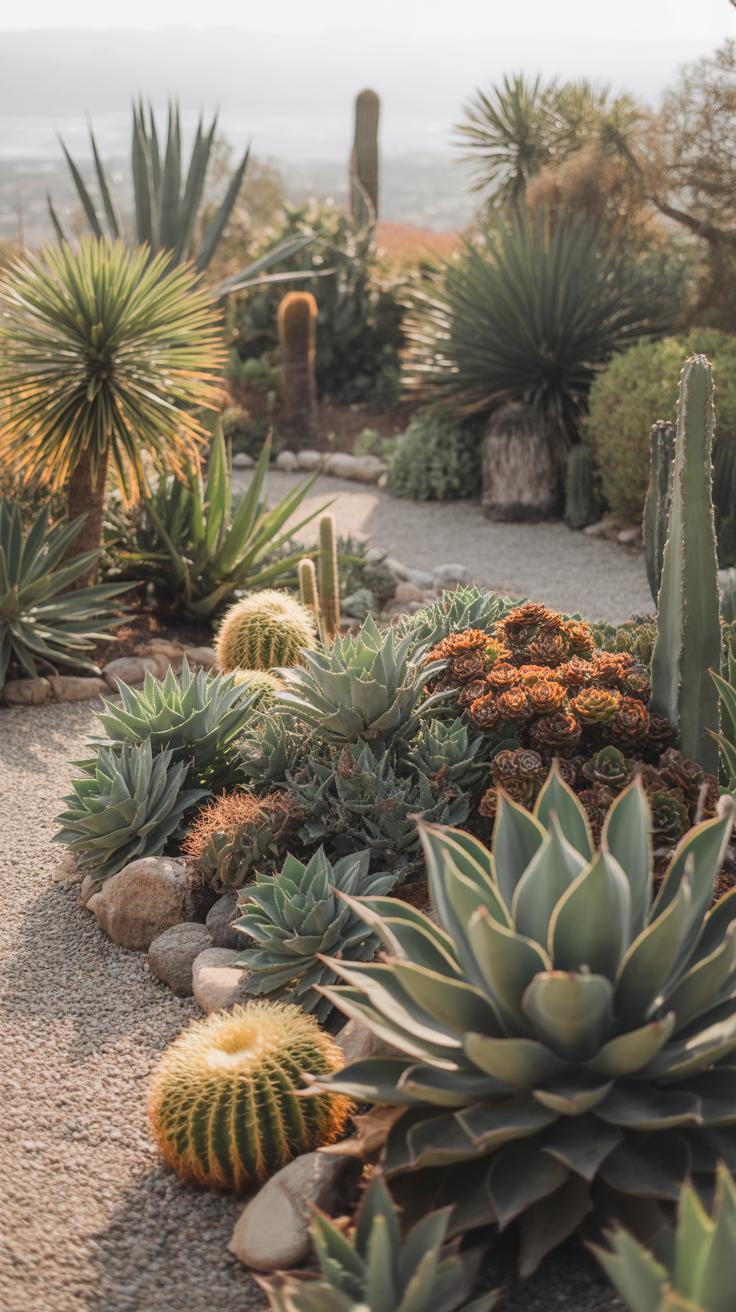
What is Xeriscaping
Xeriscaping is a gardening approach that focuses on lowering the amount of water your garden needs. It’s not just about using less water—it’s about working with plants and materials that naturally require little irrigation. The idea is to create a garden that looks good and thrives without needing constant watering. You might think this means bare or dull spaces, but that’s not true. Xeriscaping can be attractive and lively while still being practical.
Water conservation is at the core of xeriscaping. Instead of fighting against your local climate, this method encourages you to work with it. That means choosing plants that can survive dry spells, arranging them to make watering as simple and targeted as possible, and improving soil so it holds moisture better. The goal is to cut down your water use dramatically without sacrificing your garden’s appeal.
Key Principles to Follow
There are several key practices to keep in mind if you’re considering xeriscaping. These are core ideas that guide how you plan and maintain your garden:
- Plant Selection: Pick plants that naturally do well with limited water. Native species often fit this well, but sometimes drought-tolerant non-natives work too. It’s about matching plants with your environment.
- Soil Improvement: Good soil holds moisture better. You might need to add organic material or mulch to help the ground retain water longer. This reduces how often you need to water.
- Efficient Irrigation: When you water, make sure it’s done thoughtfully—use drip irrigation or water in the early morning or late evening to avoid waste. The goal is to give plants just what they need.
- Thoughtful Design: Group plants according to their water needs. Place thirsty plants together, and drought-tolerant species elsewhere. This avoids overwatering some plants and underwatering others.
These principles don’t stand alone; they overlap and depend on one another. You could choose perfect plants, but if the soil drains too fast or your watering system is inefficient, efforts might fall short. Xeriscaping is about balancing all these elements, which may take some tweaking over time. The reward, though, is a garden that can handle dry conditions without becoming a constant chore.
Choosing Suitable Xeriscape Plants
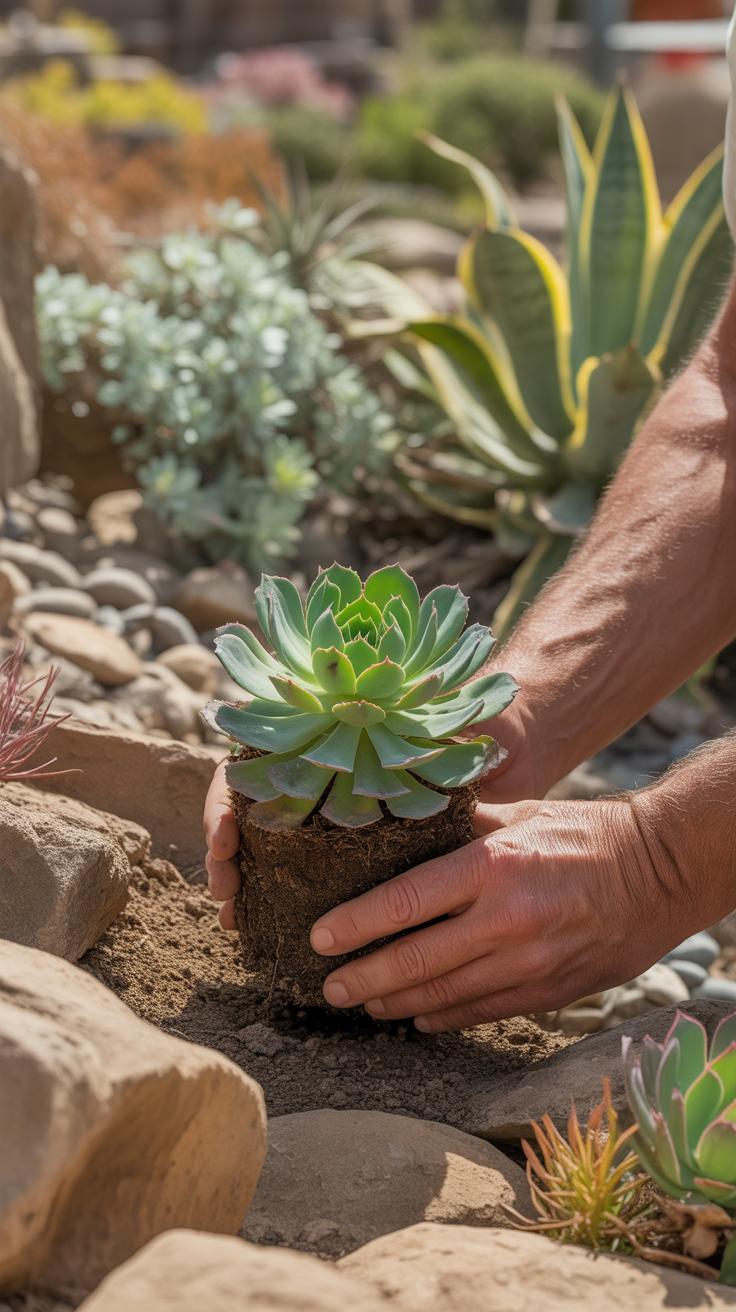
Picking plants that handle dry conditions well is key to a successful xeriscape garden. You want specimens that don’t demand much water but still add character to your space. Look for plants with deep root systems or those that store moisture inside their leaves. Succulents like agave and aloe are popular because they hold water, but there are plenty of other options worth exploring. For example, lavender and Russian sage offer both drought resistance and a bit of color across seasons.
Drought-Tolerant Plants
Some plants naturally cope better with scarce water. Think of yucca, sedum, or ice plant—each thrives on very little irrigation. These plants are ideal because they require watering only occasionally, which helps cut down on water waste. Their tough leaves and slow growth contribute to their survival in dry spells. You might wonder if such plants look a bit plain, but they can be surprisingly diverse in texture and shape, bringing a quiet beauty that changes with the light. Choosing a variety blends functionality with aesthetics.
Native vs. Non-Native Plants
Deciding between native and non-native species can influence your garden’s health and water usage. Native plants evolved in your local climate, so they usually need less watering once established. They support local wildlife and often adapt to soil conditions better. On the other hand, some non-natives perform well and have been bred for drought tolerance, but they might require more attention or disrupt local ecosystems. It’s tempting to pick striking exotic plants, but native options often provide a more sustainable option. Still, mixing both types can work if you watch water needs carefully.
Design Steps for Xeriscape Garden
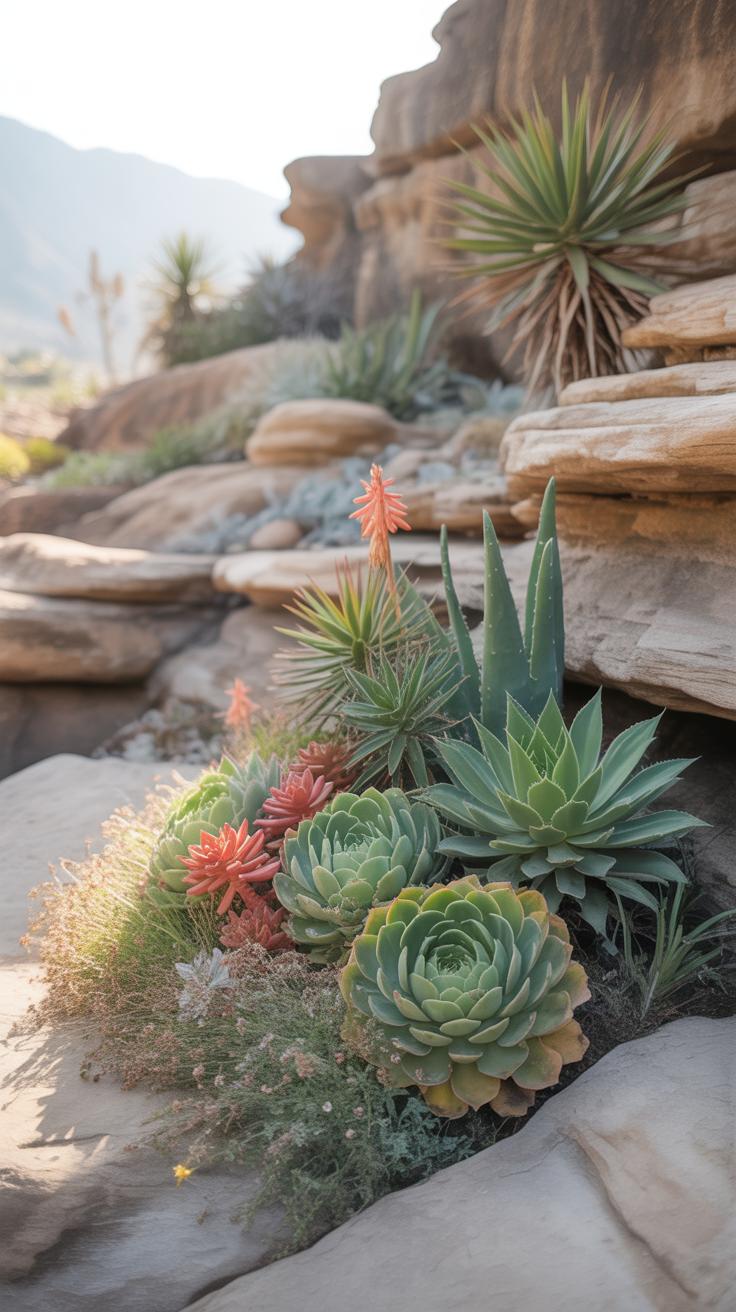
Designing a xeriscape garden may feel overwhelming at first, but breaking it down helps. Start by looking closely at your yard. What’s the soil like? Sandy, clayey, or somewhere in between? Check the sun exposure through different times of the day. Some areas bake in full sun, others get partial shade. This tells you where certain plants will do better.
Next, sketch a simple layout of your space. Mark spots where water might naturally collect or where drainage is poor. These details influence plant placement.
Think about creating distinct zones in your garden. Group together plants that need similar amounts of water. It’s easier for watering—like setting a sprinkler to cater only to those plants rather than watering everything the same.
- Evaluate yard conditions: soil, sunlight, drainage
- Draw a rough garden layout showing these conditions
- Identify areas with different water needs and group plants accordingly
- Place drought-tolerant species in sunniest, driest spots
- Cluster plants needing occasional watering closer to water sources
This step often helps avoid overwatering—something I had to learn the hard way. Grouping plants not only preserves water but reduces stress on those not meant to stay soggy. The design may change as you go; it’s a flexible process, so don’t feel locked in by your initial plans.
Soil Preparation for Water Savings
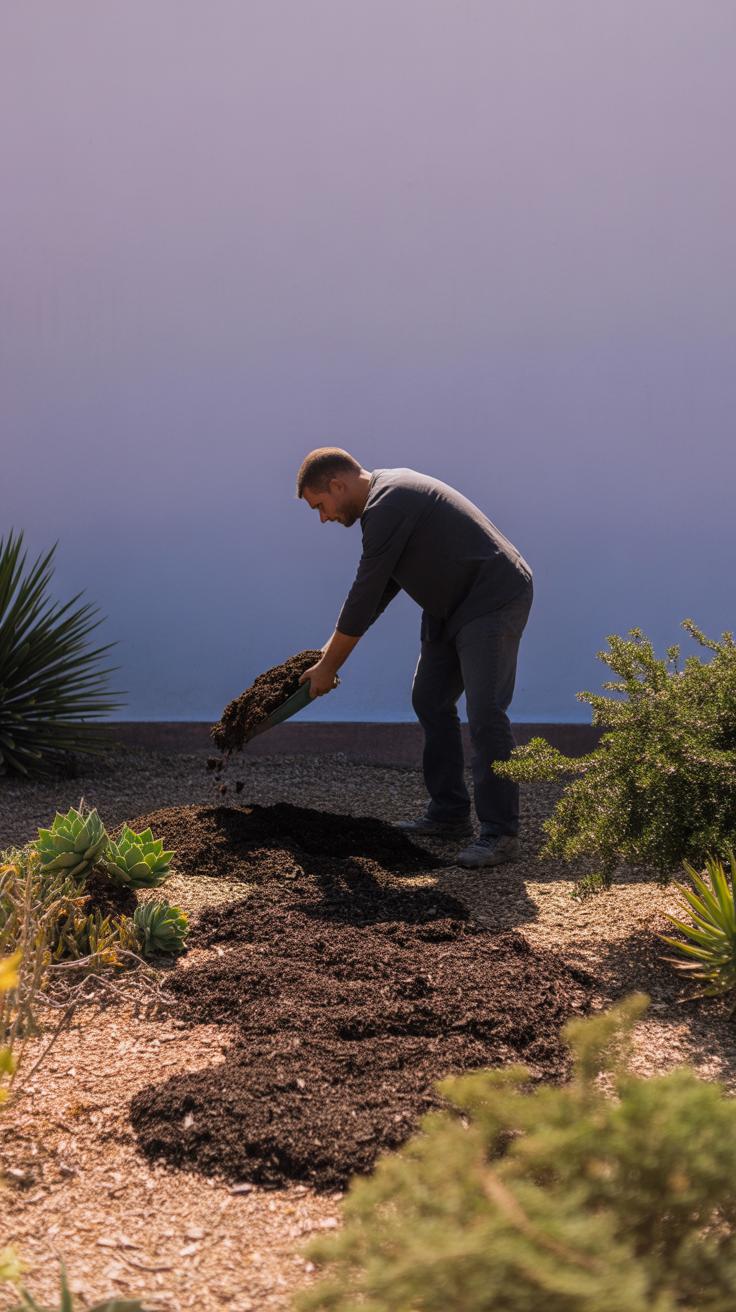
When working on your xeriscape garden, soil can make or break how well your plants thrive with less water. Different soil types hold water differently, and understanding this can guide how you prepare the ground. For instance, sandy soil drains quickly, so water tends to run off, leaving plants thirsty. Clay soil, on the other hand, holds water but may become compacted, restricting roots from breathing.
Improving soil structure is key. You might want to add organic matter like compost to sandy soil to help it hold moisture longer. Clay soils often benefit from the same addition, which can lighten the texture and improve drainage. Mulch plays a role too—covering the soil surface with mulch can significantly cut down evaporation. I’ve noticed that after mulching, my garden’s soil stays damp longer, meaning fewer waterings.
Besides conserving water, compost feeds the soil microbes that support plant growth. Healthy soil holds onto water better, but it also provides nutrients, keeping your xeriscape plants happier. It’s almost like building a soil sponge beneath your plants. Maybe you’ll find, as I did, that these preparations cut back your watering schedule more than you expected, which is really the point here.
Think about what soil you have. Could you test it or just observe it after rain? Then, start layering in compost and mulch. Watch how your soil responds. It’s a bit of trial and error but worth it, and your plants will show you what works best.
Efficient Irrigation Techniques
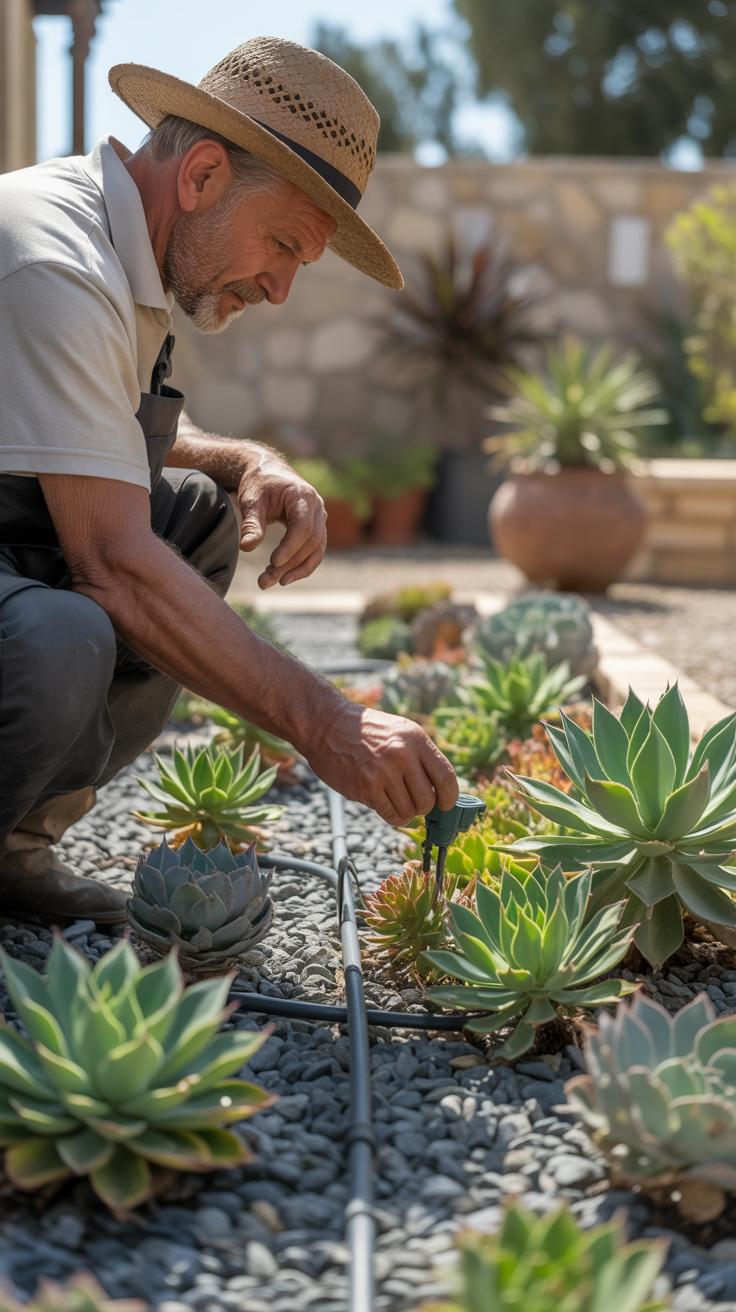
Drip Irrigation Systems
Drip irrigation delivers water directly to plant roots through a network of tubes and emitters. This approach limits water loss by evaporation or runoff, unlike traditional sprinklers that spray water broadly. You might find it surprising how much water this method can save—sometimes more than half compared to overhead irrigation.
Because water seeps out slowly and right where plants need it, drip systems reduce stress on your garden during dry spells. Plus, you get better control over how much water each plant receives. Of course, setting up a drip system takes some initial effort and planning, but many find the water savings quickly make up for it.
Water Scheduling and Monitoring
Deciding when and how long to water feels like guessing at first. But with a bit of observation, you can fine-tune it to avoid watering too much or too little. Soil moisture sensors help—these little tools check if the ground is still damp or dry enough to warrant more water.
Watering early in the morning is usually best, reducing evaporation during hot hours. But sometimes your soil holds water longer than you expect, especially if you’ve improved it beforehand. Paying attention to weather forecasts can also save you from watering right before rain—though, honestly, who remembers every time?
In some cases, automated timers paired with moisture sensors take the guesswork away. Still, I think it’s worth keeping an eye now and then because systems can fail or conditions change. After all, your garden won’t thrive on rigid schedules alone—it needs a little attentiveness.
Maintaining a Xeriscape Garden
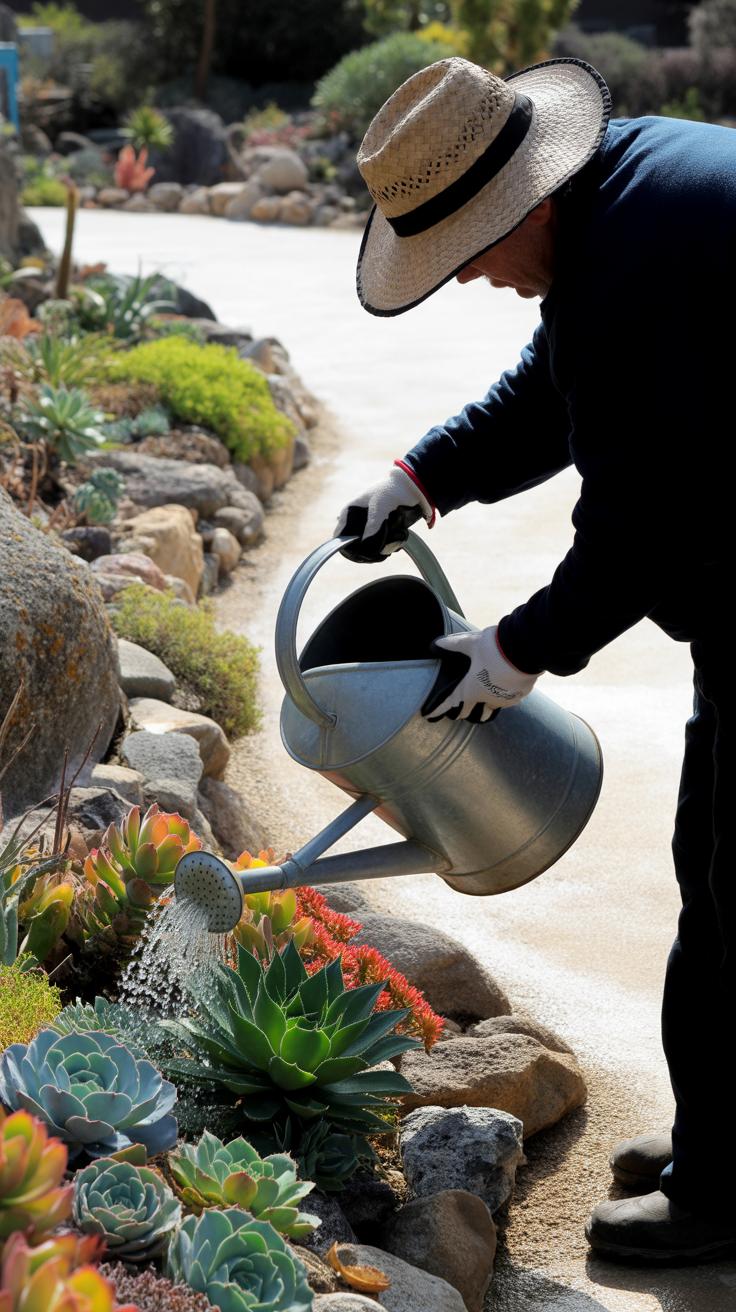
Keeping a xeriscape garden healthy without pouring in lots of water might seem like a challenge, but it’s really about working smarter, not harder. One of the biggest maintenance tasks is managing weeds. Unlike traditional gardens with thick mulch or dense plantings, xeriscapes often have open soil spaces that invite weeds. You can stay on top of this by hand-pulling when the weeds are young—this prevents them from stealing moisture and nutrients. Using a light layer of mulch, such as gravel or organic matter, helps slow weed growth without demanding too much upkeep.
Pruning in xeriscape gardens isn’t about shaping every branch perfectly. The idea is to remove dead or crowded growth to let air circulate and light reach the plants. For instance, desert shrubs might need a trim after their spring bloom to keep them from becoming leggy. But don’t prune too much at once; it can stress these drought-tolerant plants.
Seasonal care involves adjusting your routine as the climate shifts. Early spring means a good time to clear out winter debris and inspect for pests. Summer might require topping off mulch to retain moisture, while fall is ideal for cutting back perennials that have finished their cycle. Come winter, it’s usually best to let plants rest—unless there’s an unseasonal dry spell that calls for a light watering. Though it sounds simple, staying mindful through the year can keep your garden looking its best with surprisingly little effort.
Benefits Beyond Water Savings
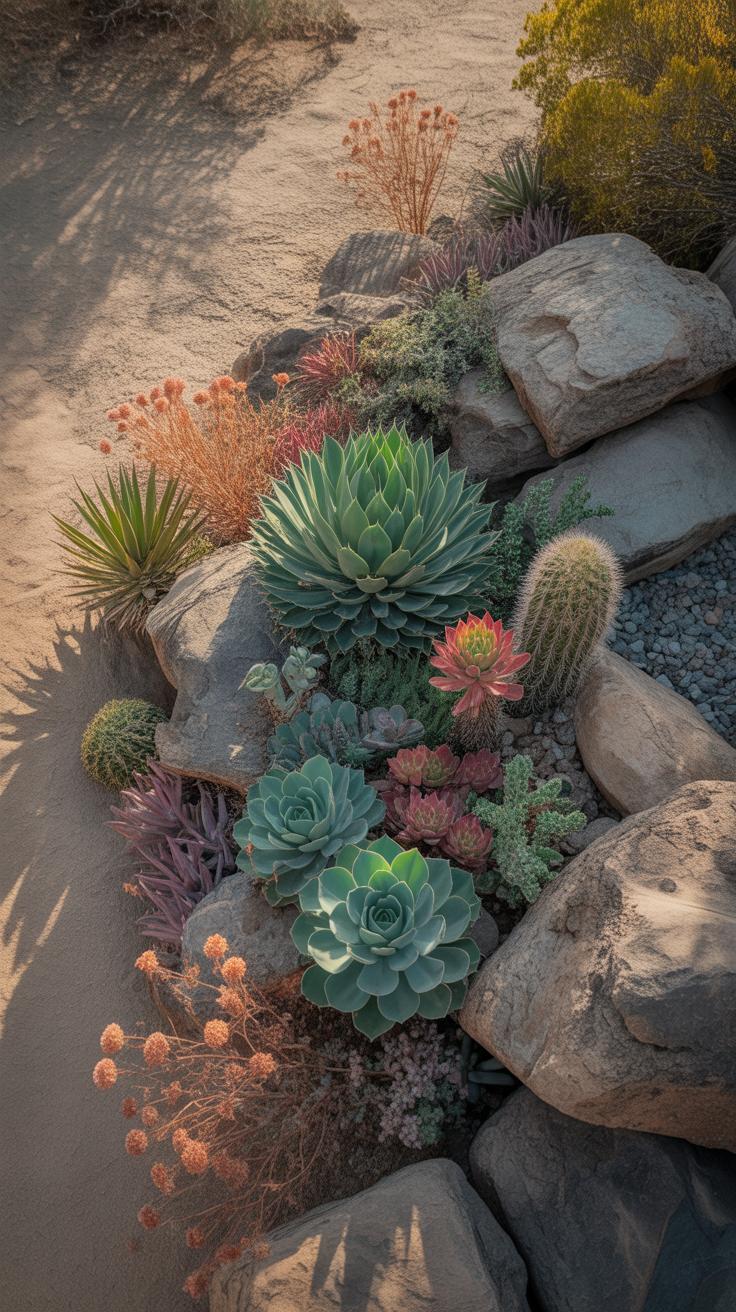
Xeriscape landscaping offers more than just cutting back your water use. You may notice lower water bills, sure, but it also trims costs in other ways that aren’t always obvious at first. Less irrigation means less wear and tear on your watering systems, which saves on repairs and replacements. And since most xeriscape plants are tough, native or drought-tolerant types, they don’t demand frequent fertilizers or pesticides. That naturally means fewer trips to the garden store and less time spent maintaining the space.
Think about it—after switching to xeriscaping, some homeowners find themselves with more free time, no longer stuck wrestling with a high-maintenance lawn. It’s a quieter, more relaxed kind of upkeep that feels almost like a break from gardening stress. Yet, you might wonder if that means sacrificing variety or beauty. Actually, xeriscape gardens can be quite diverse and attractive, though the choices lean toward plants that thrive with less fuss.
Another advantage, maybe less obvious, is how these gardens can aid local wildlife. Drought-resistant plants often produce seeds, nectar, or shelter that native insects, birds, and small animals depend on. Your xeriscape can become a small but vital habitat within an urban or suburban area. It’s a subtle way to support biodiversity without needing a large, wilderness plot, and it can make your outdoor space feel more alive—though that buzz or chirp might surprise you if you’re not expecting it.
Starting Your Own Xeriscape Garden
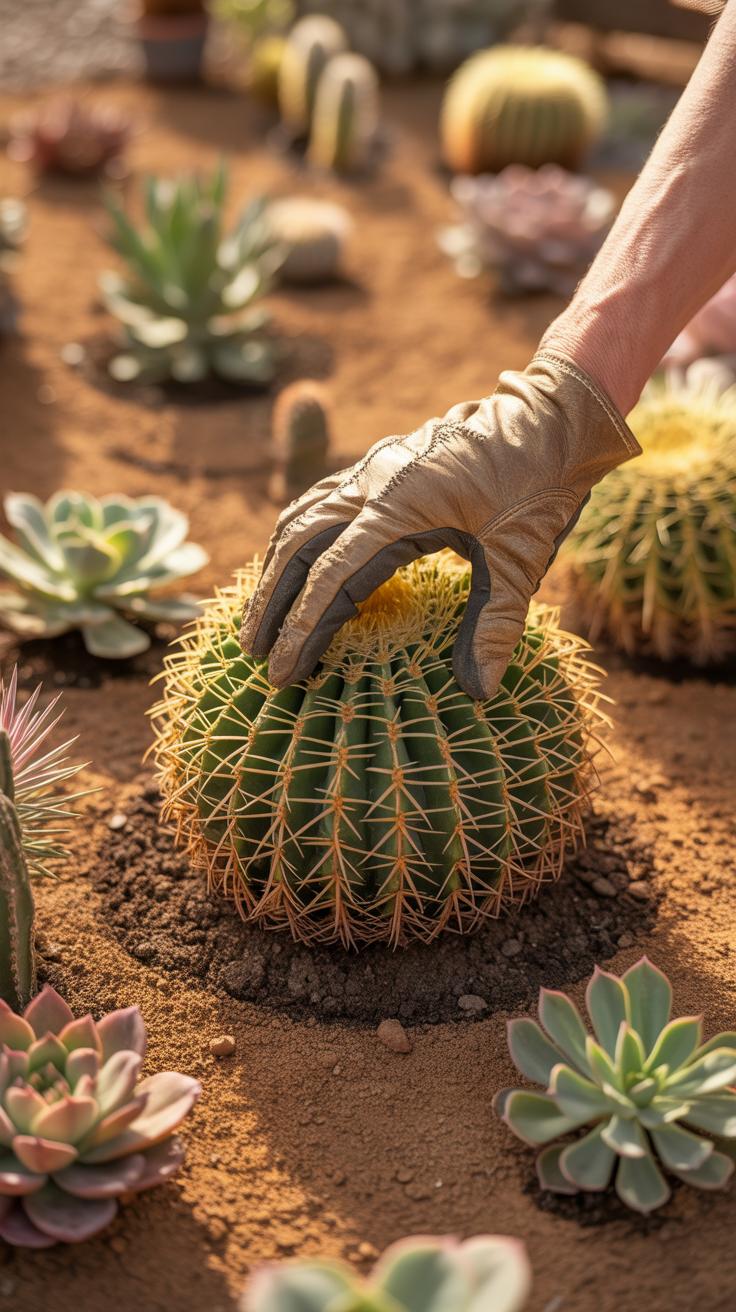
Getting started with xeriscaping doesn’t have to feel overwhelming. You can begin by focusing on some straightforward, manageable steps that set the foundation for a low-water garden. First, think about choosing the right plants. Drought-tolerant varieties like lavender, succulents, and native wildflowers often work well. These plants naturally need less water and can handle your local climate better. It might seem tricky to pick the “right” ones, but visiting a local nursery can give you a good sense of what grows well nearby.
Next, consider your irrigation. Setting up drip irrigation or soaker hoses helps target water to where it’s actually needed. Unlike sprinkler systems, they reduce waste and keep soil moist without overwatering. If you’re not ready for irrigation equipment, even hand-watering at the roots can make a difference while you learn.
Then, think about soil and mulch. Good soil that drains well will help reduce water needs, and a layer of mulch keeps moisture in and weeds out. Sometimes, simple actions like spreading mulch feel small, but they really add up for water control.
You might feel a bit stuck at first, and that’s okay. There are plenty of resources to support you. Local nurseries often have staff who understand xeriscaping and can loan advice suited to your area’s conditions. Online guides, gardening forums, and even community workshops can also fill in gaps, especially if you want step-by-step help. If you’re like me, you might find that learning from others’ trial-and-error saves you a few headaches.
What’s your first plant pick going to be? Sometimes choosing just one plant to start with makes the whole process feel less intimidating. It’s an easy way to dip your toes into xeriscaping and see how it fits into your home garden design.
Conclusions
Xeriscape landscaping offers many benefits for your home garden. It helps you use less water, saving money and protecting the environment. Your garden will need less care, leaving you more free time. Picking the right plants and placing them well is key to a healthy, attractive garden that lasts.
Making your garden xeriscape friendly also means creating a space that fits your local climate. This approach helps plants grow stronger with less water. By adopting xeriscaping, you support water conservation and enjoy a beautiful, practical garden all year round. You can start with simple steps and see the rewards quickly.


